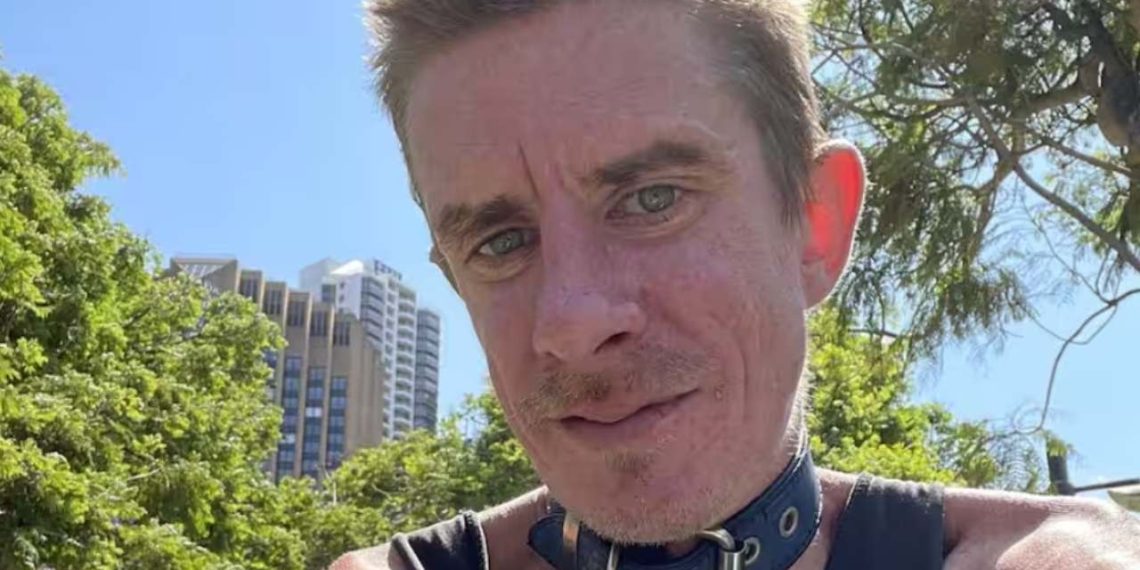For numerous years, Fox Vaughan resided just meters away from Taylor Square, a significant gay landmark situated on Sydney’s Oxford Street, a route pivotal to the Mardi Gras parade. Despite this proximity, he has never attended the parade—and this year is no exception.
“I’m not a great fan of crowds, but that aside, I take issue with the way over recent years the Mardi Gras board have allowed it to be a commercial circus,” he said.
“I think respect in sponsorship is key — show you’re an ally all the time.”
He says he believes Mardi Gras also “focuses too much on the G in LGBT”.
“We are a very diverse community but I feel the parade especially focuses on gay white men.”
Vaughan articulates that his concerns regarding the parade reflect a more extensive sentiment of inadequate community support within the LGBTIQ+ community.
“As a bi guy, I feel erased. Gay guys either fetishize bisexuality or just simply say it doesn’t exist and I feel trans people are excluded a lot.
“We don’t come together enough to fight the big issues, such as the very high rates of suicide and domestic violence in the community, and that saddens me.”
Anticipated participation in this year’s 46th annual Gay and Lesbian Mardi Gras parade exceeds 12,000 individuals across 200 floats.
Tens of thousands are expected to spectate the parade, with potentially hundreds of thousands attending related parties, including those catered to transgender individuals organized by the official Mardi Gras organization.
Describing itself as “a beacon of diversity and inclusion for the world’s LGBTQIA+ community,” the organization underscores its commitment to embracing all facets of LGBTQIA+ identities.
“Over the years we have proved that, in the face of adversity and persecution, the LGBTQIA+ community can get attention, we can drive debate and we can change opinions, laws, lives, hearts and minds,” its website reads.
Nevertheless, certain members of the LGBTIQ+ community opt out of attending the event, citing a variety of personal and political motivations.
Sandy O’Sullivan, a transgender Aboriginal academic, has been a regular attendee of Mardi Gras since the mid-1980s. However, this year, they have chosen to abstain for several reasons, including the challenges of navigating the event with their disability.
They highlight Mardi Gras’ significant issue regarding the safety of queer people of color at its events, partly due to their discomfort marching alongside NSW police officers.
“Queer Indigenous people are subject to police and the carceral system at a much higher rate than our non-Indigenous counterparts.”
They advocate for a truth-telling process where police acknowledge and apologize for past violence against the LGBTIQ+ community. Additionally, they assert that Mardi Gras must enhance its efforts to include and support transgender individuals.
“It continues to be called the Sydney Lesbian and Gay Mardi Gras and continues to not reference trans people or other queer people.”
“We’ve got great people and allies marching that we work with who support us and who challenge (societal norms) through their very presence. But to just say, ‘of course you’re included’ — it’s not enough.”
Controversial History Of NSW Police At Mardi Gras
This week, the Mardi Gras board withdrew the NSW police’s invitation to march following allegations linking an officer to the murder of a gay couple, Jessie Baird and Luke Davies.
Eventually, a compromise was reached between the board and the force, allowing officers to march but not in uniform, as they had in previous years.
Many community members argue that police should never have been invited to march in the Mardi Gras parade, a tradition that began in 1998.
The origins of Mardi Gras trace back to its inaugural event in 1978, which was a protest coordinated in solidarity with other gay and lesbian groups worldwide on the anniversary of the 1969 Stonewall riots in the US.
During the 1978 protest, police brutality led to the beating and arrest of 53 individuals, whose names, occupations, and addresses were subsequently published in newspapers.
Attendee Robyn Kennedy told SBS News the 1978 event turned into a “riot”.
“Obviously, the first one was awful. But now it’s completely different. It’s huge. It’s spectacular, it’s glamorous. I mean, some people say it’s too commercial but it’s a part of the evolution.”
She asserts that Mardi Gras was destined to evolve and emphasizes its continued significance as a “beacon of hope” for young individuals navigating conservative environments.
“The objective of creating visibility for the public is still what it is and was about and even more so now. I think it’s achieved that original intention of taking up space in a public way.”





